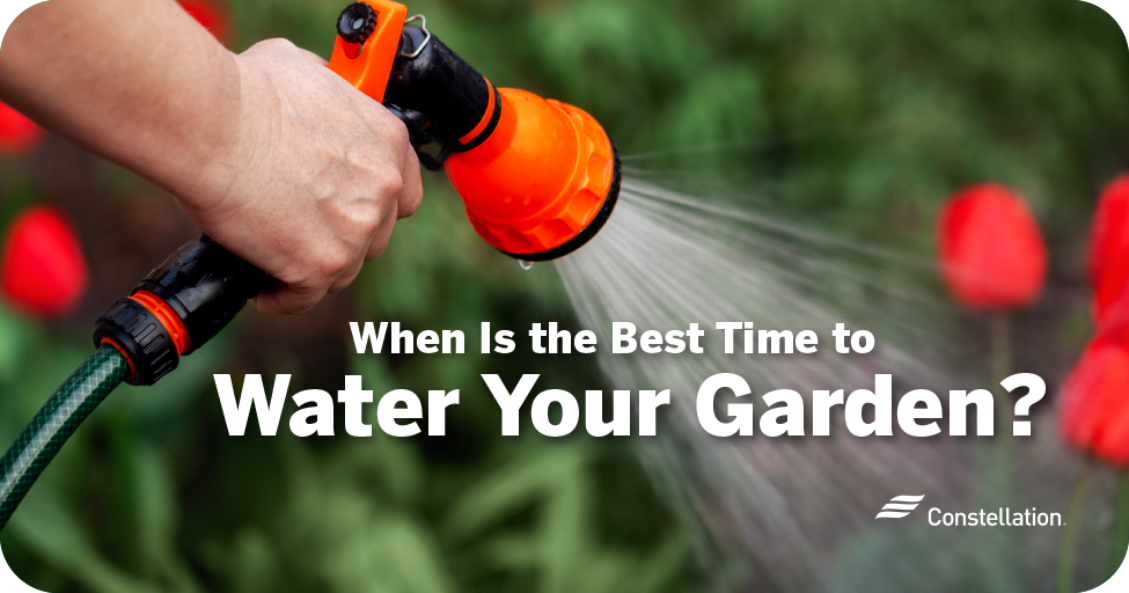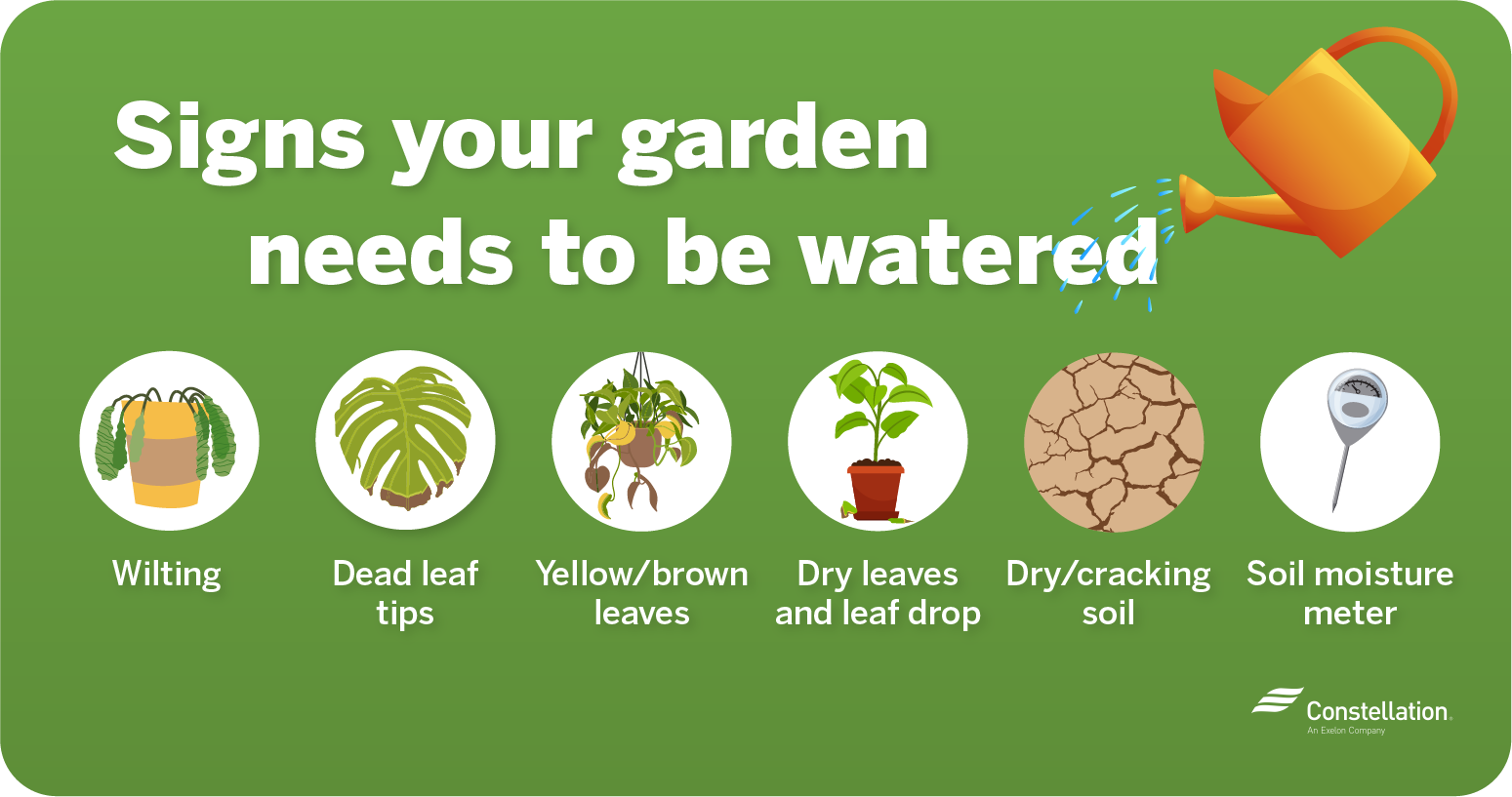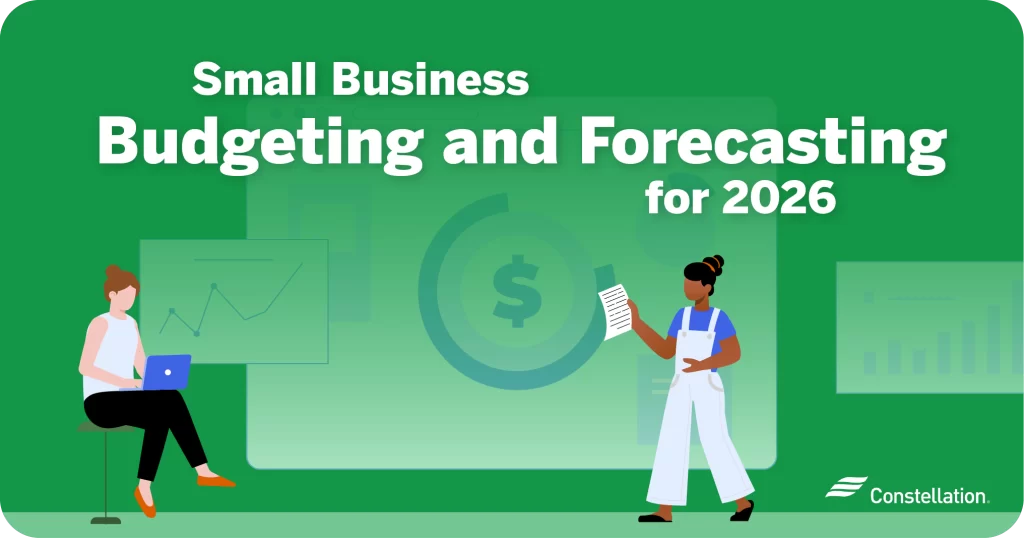
- Category:
Energy Efficiency -
Last updated:
March 21, 2022
When is the Best Time to Water a Garden to Conserve Water?
Figuring out the best time of day to water your garden involves several factors. You’ll want to start by thinking about the growth cycles of the plants in your garden. Your watering schedule will also depend on the system you use. Efficiency plays a role, ensuring that the water gets used by the plant and isn’t lost to evaporation.
Here, we take a deep dive into your garden watering questions.
Is it better to water your garden in the morning or at night?
Many people wonder about the best time to water plants — is morning or night better? You may have even heard myths about damaging plants by watering them in the heat of the midday sun. Is there really a best time to water plants in hot weather?
Watering your garden in the morning
Experts agree that early morning is the best time to water your garden. The ground is cool and the sun is not as strong, meaning more water will soak into the soil instead of evaporating. When you water in the morning, you give the foliage time to dry off during the day, which keeps down mold and insects.
Try to schedule the watering of your garden between 5 and 10 a.m. Soak the area deeply, at least 5 or 6 inches, at the plants’ roots.
Watering your garden at night
Evening and night are not the best times to water your garden. Water can puddle around plants and saturate the surface of their leaves, creating a warm, moist breeding ground for insects and mold.
But even though night isn’t the best time to water plants in hot weather, it’s better to water at night than not at all! Consider using a drip system that directs water right to plant roots, keeping leaves dry. You’ll reduce the chance of diseases and infestations, and a drip system is one of the better ways to conserve water in the garden: Less water is lost to evaporation.
How often should I water my garden?
How often you should water your garden depends on your situation and what plants you’re growing. The general advice is to give your garden 1 inch of water per week.
If you’ve had frequent rainstorms, you’ll need to water less. If the weather has been dry and scorching hot, however, you’ll need to water more often.
The “finger test” is a good way to check whether you need to water your garden. Stick your finger a good 2 inches into the soil near your plants. If it’s dry all the way down, you probably need to water your garden. If the soil is moist, hold off.
Be sure to learn the water requirements of each plant. You may need to water the moisture-loving plants in your garden more often than others. As a rule of thumb, group plants with similar water requirements together.
Signs your garden needs to be watered
Aside from the finger test, here are some additional ways to assess if your garden needs watering:

- Drooping leaves are a common sign that a plant doesn’t have enough water.
- Dead leaf tips. This is the next stage after wilting. If your plants don’t get water soon, the leaves will begin to die, starting at the outer tips.
- Yellow or brown leaves. If you don’t water at the first sign of wilting or discolored leaf tips, the entire leaf can die and turn yellow or brown.
- Dry leaves and leaf drop. Left without water long enough, leaves will eventually dry and fall off. Once your plants reach this stage, it may be too late to save them.
- Dry or cracking soil. As soil loses water, it shrinks, creating telltale cracks that let you know it’s time to water the garden.
- Soil moisture meter. A more exact way to know when to water is to use a soil moisture meter to measure exactly how much water is in your garden.
Ways to conserve water in your garden
It’s important to pay attention to water use in your garden. Lowering outdoor water use is a big part of how to save water in the summer. These water conservation tips are good for the environment and the health of your plans, and may help save energy.
1. Add mulch to your garden bed
Energy-efficient gardens use natural methods to conserve water. Adding a layer of organic material chokes out weeds because it adds a barrier that slows down water evaporation.
2. Properly maintain your soil
Good soil is a mix of clay, sand and organic matter that’s regularly turned and aerated to provide nutrients and retain moisture for healthy plants. Add compost every year and turn the soil before planting in the spring and after the first frost in the fall.
3. Automate your watering schedule
Automating your garden puts technology to work to optimize watering your plants. Using smart sensors that measure soil moisture and smart sprinklers that turn on when water is needed are ways to conserve water in the garden. You only water when needed and with just the right amount, reducing waste.
4. Use the correct irrigation system
Most irrigation systems use either sprinklers or drip hoses. Sprinklers are good for plants that need moisture on their leaves and are also the most practical option for large gardens and lawns. Yet considerable moisture is lost to evaporation — particularly on hot days — when you use sprinklers.
A drip system applies moisture at a slow, steady rate, right at the roots. Little water runs off or evaporates, making it the most efficient way to water your garden.
5. Collect rainwater
Rainwater is a natural and healthy source of moisture for your garden. You can collect it in attractive barrels placed around your property. This ensures that you have water where you need it without having to drag around a hose.
6. Grow drought-resistant plants
Plants that don’t need a great deal of water and tolerate dry spells well are a good option for low-maintenance gardens that conserve water. But don’t think you’ll be stuck only with cactuses. Many flowers and vegetables, especially those native to your area, can withstand dry spells.
You don’t have to cut out beauty to cut down on water use.
7. Repair any outdoor water leaks
A fitting that leaks at the spigot or a hose with tears and holes can be a major cause of wasted water. Keep them in top shape and replace any damaged connections. It’s a good idea to perform biannual spring and fall inspections of your outdoor plumbing to eliminate problems early.
Save water while keeping your plants healthy
With care and thoughtful use, you can conserve water in your garden. Choosing the best time to water your garden will cut down on waste and lead to healthier plants. Automation, along with natural methods for watering and retaining soil moisture, will keep your plants robust and your energy and water usage in check.




